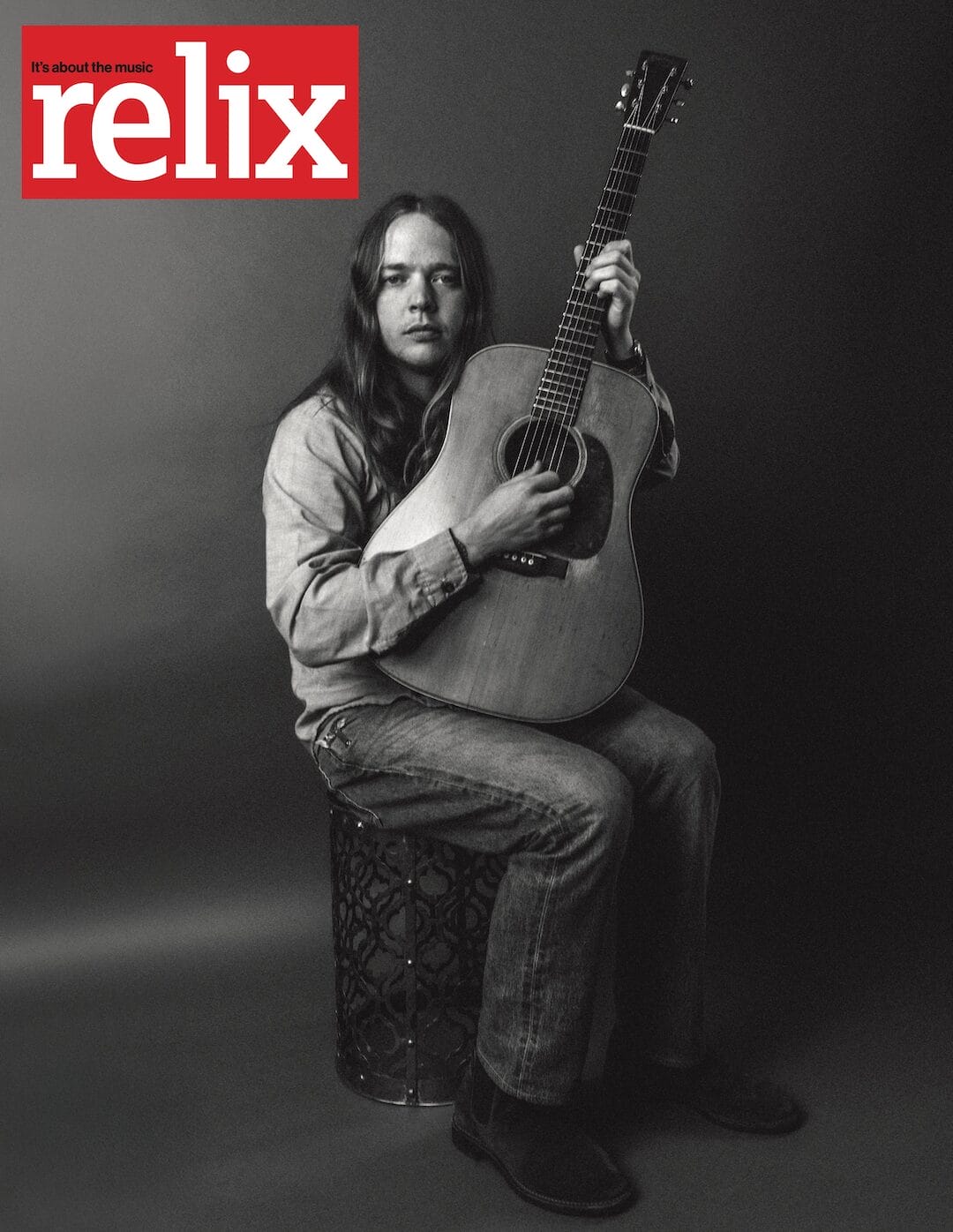I Got a Song: History of the Newport Folk Festival

Photo credit: Dean Budnick
Rick Massimo’s I Got a Song: A History of the Newport Folk Festival (Wesleyan University Press) is the first book-length treatment of Newport, R.I.’s iconic event. Massimo’s narrative begins as producer George Wein launches the festival in 1959 and tracks Newport Folk’s highlights and struggles over the years to follow. Massimo, who grew up in Providence, covered the event for nine years as pop music critic for The Providence Journal.
The following book excerpt explores the recent history of Newport Folk. Massimo writes that in 2010, Jay Sweet, who is now executive producer of the Newport Festivals Foundation, “told Wein that he wanted the job of producing the festival. He says he told Wein that if the festival didn’t sell out within three years, Wein could fire him. Wein took Sweet up on it.” Here, the author provides an overview of the events that ensued:
Today’s Newport Folk Festival doesn’t match Pete Seeger’s mid-‘60s vision of a dozen or more stages with everyone from the famous singersongwriters to the backwoods fiddlers, where someone could ask Seeger the chords to “Waist Deep in the Big Muddy” and get an immediate private lesson. But music and musicians occupy nearly every corner of Fort Adams for three days, and while the hipsters, the hardcore and the hippies traipse around the grounds together, the older folks in tie-dyed shirts are steadily and increasingly outnumbered by young men in fedoras and dress shirts and women in retro-‘70s gear. All around, artists who have already played, artists whose sets aren’t for another day and artists who aren’t even booked stroll the grounds, many as excited to be there as the fans, hanging around in order to soak up the fellowship—a dynamic that Jim Kweskin or Judy Collins would recognize from the 1960s and Amy Ray from the 1990s— and, in many cases, to continue the process well into the night at various clubs throughout the city.
Newport “has begun to feel more like a state of mind than an annual event,” the Boston Globe’s James Reed wrote in 2014, describing the festival as “all over the map. That, of course, is exactly how most young people experience music these days.”
Yet, while at least two of the organizers independently use the phrase “this festival moves forward,” the structure and spirit of Newport—as well as a lot of its success—come from a conscious evocation of the past by the organizers, artists and fans. It mirrors and profits from the Utopia days, echoed in the celebrated bubbling up of tradition-inspired music that’s taken place in the 21st century.
Jay Sweet is proud to point out that he beat his own sellout guarantee to Wein—the Saturday show of 2011 was the first sellout since Dylan’s return in 2002, which, in turn, was the first sellout since the Indigo Girls in 1998. Each year after that, the festival broke another barrier. In 2012, the festival sold out both days; in 2013, it sold out both days in advance. And in 2014 and 2015, not only did the festival add a third full day of programming, but it also sold its allotment of 10,000 tickets for each day before the lineups were announced. 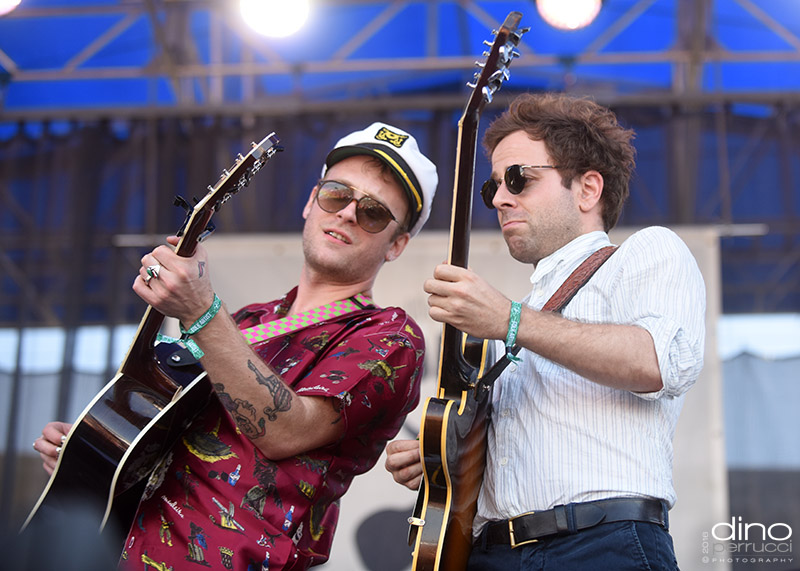
The festival added its second stage in 1998, a third in 2003. Since then, the number of stages has climbed at an even faster rate. The Family Tent, added in 2012, has gone from hosting a formally scheduled roster of children’s acts to becoming the jam hangout for artists, particularly when the main stage on the north wall of the fort is being changed over between sets. (Indeed, adults vastly outnumber children in the tent and, like a good children’s movie, the material generally runs to the kid-friendly rather than the expressly kid-centered type.) The small stage on the edge of the harbor was replaced in 2010 with a bigger stage set on the parade ground inside the fort, a mostly enclosed area that has turned into what operations manager Tim Tobin calls “a festival within a festival,” with an audience and universe of vendors, glad-handers and starstudded guest appearances of its own. Performances began in the 100-seat Museum of Yachting in 2013, and the nooks and crannies of Fort Adams buzz with small-stage shows for radio broadcasts and podcast recordings.
And while the artists no longer huddle and jam in communal, dormitory-style rooms or Blues Houses when it’s all over, the close of each day of the festival marks the beginning of after-concerts throughout downtown Newport, with impromptu collaborations and sing-alongs into the night—all of which sell out almost the moment they’re announced.
The Rhode Island–based band Deer Tick first played at Newport in 2009 and immediately began to revive the tradition of music at night after the concerts were over— first at a couple of donors-only events inside Fort Adams, later at rowdier and less formal gatherings of colleagues and friends at the Newport Blues Café in the downtown. Their shows and others include on-the-spot collaborations, as well as a mix of originals and relatively modern rock classics. Chief singer and songwriter John McCauley says, “The festival ends early every night, and a big portion of the crowd, and the musicians themselves, don’t want it to end.”
“It’s phenomenal because I really didn’t see it coming,” says Jim Gillis, who has been covering the festival for the Newport Daily News since 1985. “I’m not exactly Kreskin when it comes to these things, but I didn’t see it bouncing back to this level, where it’s become one of the hottest tickets in the country in the summer.” 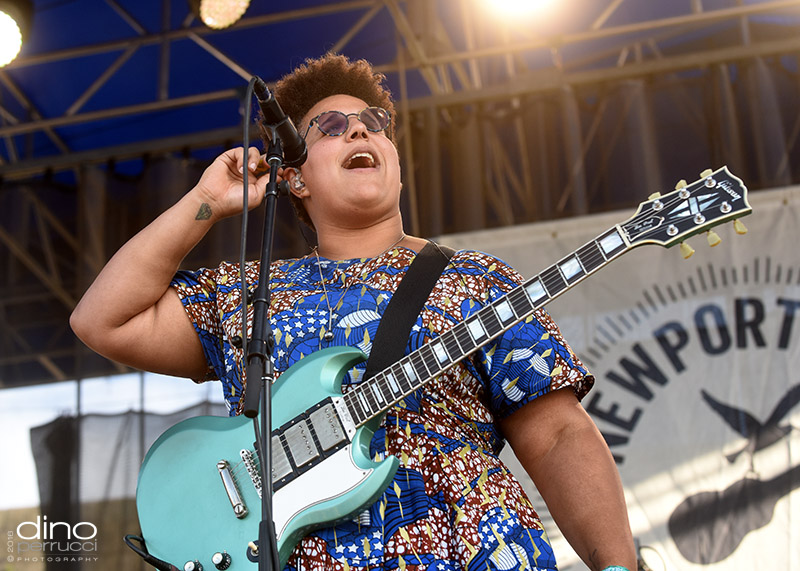
The experience begins months before the shows do, when tickets are snapped up. Acts are then announced piecemeal over the 21st-century word of mouth that is social media. The Newport Folk Festival no longer advertises and, since 2014, they haven’t done so much as send out a press release—which only contributes to the paradoxical appeal of a sold-out event that operates under the radar.
Gillis recalls his first brush with the new way of getting the word out—during the 2008 Avett Brothers set that served as a virtual anti-[Jimmy] Buffett outpost. “There were a lot of kids near the stage. And I remember talking to them, and they knew all the songs. And I asked them, ‘How do you know about these guys?’ They weren’t on any kind of commercial radio. And they said, ‘the internet.’ The whole formula has changed in the music industry. And this festival is definitely part of it.” By 2015, the festival had so thoroughly absorbed the immediacy of electronic media that last-minute announcements and changes were more often announced through the festival’s Twitter account or smartphone app than by someone heading to the stage to talk on the microphone.
The current success has led Wein to declare Sweet “as perfect as he can be…as far as what we’re looking for from a contemporary folk festival.” Not only are the tickets selling, he says, but also “there’s a whole new feeling that started growing a couple of years ago. It’s very exciting; I’m very happy with it.” He adds that Sweet “always showed respect to the old folk festival— and he always respected Pete Seeger. That was very important to me.”
Sweet not only showed respect to Seeger’s model for the festival, but he also did his best to emulate it in modern circumstances. Upon taking control, Sweet immediately moved to eliminate titular sponsorship. The festival, he said, would never again be known as the Dunkin’ Donuts Newport Folk Festival, or the Ben & Jerry’s Newport Folk Festival or the Apple & Eve Newport Folk Festival.
“Nothing can be greater than the words ‘Newport Folk Festival,’” Sweet remembers saying, “because the only way this is going to come out is to rebuild the brand as the one and only Newport Folk Festival…If you look at the first six years of this festival, it rocked the world. And that’s not an overstatement. It changed the course of so many things. So I said, ‘Why are we not using that?’”
Sweet told Nate Chinen of the New York Times in 2012, “The artists understand that playing Newport is an invite; it’s not a booking.” The rising of a new generation of singers and songwriters means, to borrow a geological term, another layer of history on top of the Newport Folk Festival. A fan such as Sean Maloney, who grew up in North Reading, Mass., sees the Group’s era at Newport as a piece of its history. [The Group is an extended family of festivalgoers who first met in 1985 when the event returned from a 15-year hiatus.] He came to the Newport Folk Festival in 1989 as a punk-rock-loving child accompanying his father as part of a “divorced-dad weekend” and remembers, “I was miserable…you can’t listen to DRI and [then] go see Joan Baez when you’re 10; there’s too much cognitive dissonance there. But now as a 33 year old, seeing the connections grow and become solid and second nature, it’s a beautiful thing.”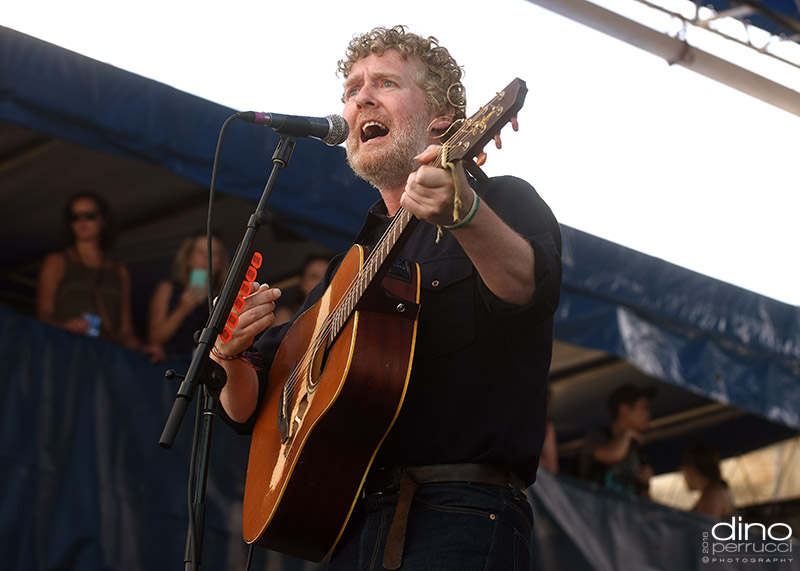
The sheer weight of history at Newport means that second-generation moments happen. In 2013, Merrill Garbus of tUnEyArDs began her Newport set with an explanation that Newport was the first festival she’d ever been to and the first festival-gig announcement she was able to impress her parents with. In 2015, Brad Barr of The Barr Brothers explained to the crowd that his and bandmate/ brother Andrew’s parents’ first date consisted of sneaking into the 1967 Newport Folk Festival to hear Arlo Guthrie sing “Alice’s Restaurant.” Hozier and Dom Flemons both credit Murray Lerner’s Festival! film with inspiring them to become musicians.
Many of the younger performers speak of Newport and the artists who came before them with reverence. The singer-songwriter Joe Pug says, “When you get onstage, you try not to think about too much stuff and just be in the moment. But it’s pretty hard to get on a stage with that much history and not at least…be self-conscious a couple of times, just realizing what a lineage you’ve been allowed to be a small part of.”
“There might be some folk purists who might be insulted [by new claims to the mantle of folk music],” says Taylor Goldsmith, the chief singer, songwriter and guitarist with Dawes, who have played the festival annually since 2009. Goldsmith also serves on the festival’s seven-member artist advisory board along with McCauley, The Decemberists’ Colin Meloy, Jim James, Gillian Welch and Sara Watkins of Nickel Creek and The Watkins Family Hour. “And, maybe, they know more about the heritage than me. But I feel that if I’m watching someone sing a song, and it’s compelling or illuminating in any possible way, and I feel like I’m getting to know that person through the music—it’s hard for me to give more of a definition to the term ‘folk.’”
Ketch Secor, of Old Crow Medicine Show, says the first song he learned to play on guitar was Phil Ochs’ “I Ain’t Marching Anymore,” from Broadside’s compilation of songs from the first two Newport festivals. The band first played at Newport in 2004, when half of them didn’t look old enough to drink. They’ve been enormously popular since then, working up to main stage slots and headlining sets. His feelings about Newport are more complicated: “I thought it was gonna be the ultimate venue and, when I got there, it was a festival.”
He says that when he plays at Fort Adams, he thinks about Doc Watson and other hillbillies from the old days— the people who would “ride all the way to the end of the line, southern New England, and be that far away from the mountains of Tennessee.” He feels a bit the same way himself. When recalling the group’s 2013 festival performance on a rainy Friday evening, he remembers thinking, “This is a crowd that has the most high-tech foul-weather gear… It looked like an L. L. Bean catalog shoot. I mean, there were thousands of dollars of rain gear right at my feet.” Introducing Jim Garland’s labor song “I Don’t Want Your Millions, Mister,” he “thought, ‘God, who am I talking to? Who is understanding this?’” 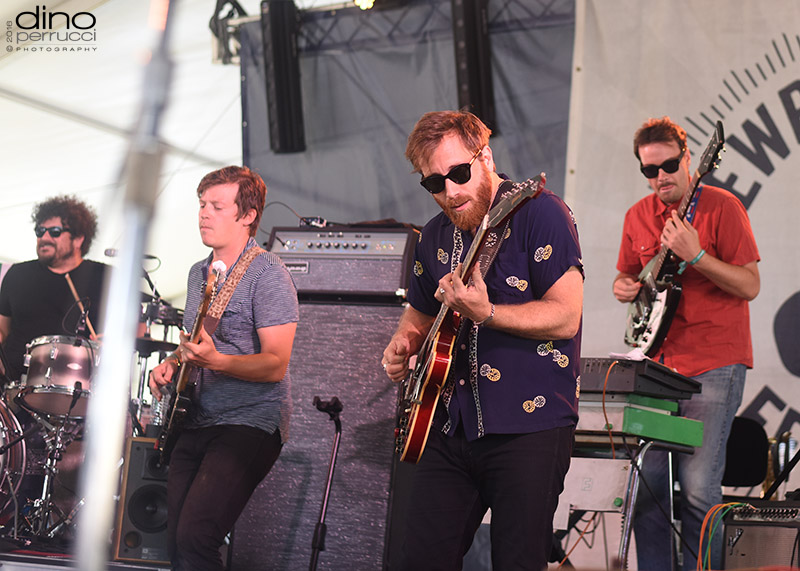
Jeff Tweedy, who has played solo sets at Newport as well as performed as the lead singer and chief songwriter of Wilco, says that coming to Fort Adams for the first time, “at least in my mind, it had a mythology similar to Woodstock. It had played a key role in rock history, or something. But getting there and playing a part in it is, delightfully, more manageable. I questioned it when we were originally asked to do it years ago, and I stopped questioning it. If they’re asking us to be there, they’re obviously asking us to come and do our thing. It’s not only a nice ethos, but I think it’s kind of smart to keep their festival from suffering from Bounder’s Disease or whatever they call it. It’s gonna die if you don’t bring in some other generations.”
Others comment on the inviting atmosphere of Newport. “I was amazed,” Jack White said from the stage in 2014, “that there was one place left on Earth that I could walk around and listen to bands and it was fine.”
“No one stays an extra day at a festival,” says Rhode Island–based singer-songwriter Joe Fletcher, who has played Newport several times and hosted a Thursday night kickoff party in 2014. “[But] a lot of bands took the weekend off and skipped a Saturday night where they could be playing somewhere and making money, just to hang out. People don’t do that anywhere else…It’s just got a magical feel—the water, the little peninsula of land, the fort—it’s aesthetically beautiful. It’s 10,000 people; it’s not a sea.”
And while Deer Tick’s McCauley, like Sweet, first experienced the festival by seeing Los Lobos in 1989, he says, “We do our best to preserve the traditions there: an appreciation of early American music, and beyond that…to other countries. And an anything-can-happen, communal kind of musical spirit. You never know who might hop onstage with someone, and that doesn’t really happen at other festivals. At other festivals, it doesn’t happen organically; it’s set up by the person who’s running the festival…[That’s] a disaster for us.”
Thao Nguyen of Thao & the Get Down Stay Down made her first Newport appearance in 2014 but says that she learned the traditions of folk music in school. “The Newport Folk Festival was the beacon for me because the reason that I got into guitar-playing…was old country, folk, blues, old-time Appalachian—and I knew that everybody I was a huge fan of had come through here. I studied them at school because it was such a pivotal part of American history and politics as well.” Even if the festival didn’t have decades of history behind it, Nguyen says, “It’s still the best festival that we play… And maybe that’s out of respect for the history and tradition of this festival, but I also think that that’s what the creators have promoted and what they stay true to. Everybody relaxes and breathes a sigh of relief.”
Sweet’s booking ethos of “a curatorial aspect mixed with a familial aspect” may find its prime example in Jim James, who has played Newport with everything from the Monsters of Folk to his own group, My Morning Jacket, to solo acoustic sets and mostly instrumental performances with a semi-orchestra. He’s also hopped onstage with seemingly anyone who would have him, ranging from singer-songwriter legend John Prine to cellist Ben Sollee to the Preservation Hall Jazz Band. James calls Newport “a magical place.”
“For me, [Newport] is the festival that you go to for two or three days, and you get lost in the world of it,” he says. “The world of Newport is such a unique and strange world because it’s like you’re in some bizarre, alternate-universe amusement park. The site of the festival itself, this old fort— and you’re playing looking at the water, looking at all the boats. It’s like everything’s drawn in pastels or something. Finding yourself rehearsing in some crazy mansion the size of a museum that’s now just a tourist attraction…there’s just something about the whole place. I’m a big believer in spirits and ghosts and whatever forces are working that we’re not fully aware of, and I just feel like Newport is full of ghosts. It’s haunted, in a good way—and in some dark ways, there are some dark ghosts looming there as well. But that kind of makes it all part of the intrigue of the place.
“The whole process of Newport Folk is so funny because so many people consider it a folk festival, and so many people consider folk music to be a person and a guitar. That’s so many people’s definition of quote-unquote ‘folk music.’ But Dylan, most obviously, most famously, kind of proved that folk could be a guy with an electric guitar. So my definition of Newport Folk is whatever I’m personally doing at the moment…And I like playing acoustic guitar by myself, but I also like playing with a full band, and weird electronic stuff, or different types of music. ‘Folk music’ is a limitless term that has come to mean ‘a guy with an acoustic guitar.’ But hip-hop is folk music; there are lots of different types of music that is folk music. I think the festival is starting to grow and embrace that a little bit more.”
Some of the more outré additions to the Newport bill in recent years have included Beck, the singer-songwriter who made electronics into the backbone of much of his music, particularly on the hit “Loser;” and tUnEyArDs, a virtual onewoman orchestra of drum loops, percussion and ukulele. Sweet says, “I will argue all day long, with anyone, about why Beck is a folk artist.” He’s a modern-day, electro equivalent to a one-man jug band; his acoustic mini-set with ageless Ramblin’ Jack Elliott in 2013 speaks to Sweet’s point. So does the argument Gene Youngblood made in 1967: “This new music may have its roots more in technology than in turf but, because of our affluent and technological society, the Moog Synthesizer, the wahwah peddle [sic] and the Vox amp are as accessible and intrinsic to the new troubadour as the jug and Jew’s Harp were to the mountain moaner. And if the message has changed from dirt to dope, it is still a message, still personal, still reflective of the attitudes of the ‘folk.’”


